For years, the image of Hanoi buses with the two colours of red and yellow has become familiar to both city residents and tourists. Since Hanoi expanded its administrative boundary in 2008, the system of Hanoi buses has played a more important role in meeting the increasing demand for travel of the metropolitans.
Urban traffic is always an urgent issue of big cities in the world and Hanoi is not an exception, particularly when it encompasses its neighboring province of Ha Tay and some other localities of Vinh Phuc and Hoa Binh Provinces. To solve traffic jams in the inner city, the city authority has given top priority to developing a system of buses and listed it in the city’s master development strategy. Minister of Transport Dinh La Thang and Hanoi City’s People Committee Chairman Nguyen The Thao have regularly inspected the current bus routes and the quality of bus services in the inner city that show the importance of bus in traffic in Hanoi.
When we were at the bus station in Cau Giay we realized the important role of buses in travelling of city residents. From dawn till dusk, buses depart and arrive in the station, following one another and streams of people get on and get off the buses, showing the great demand for travelling by bus.
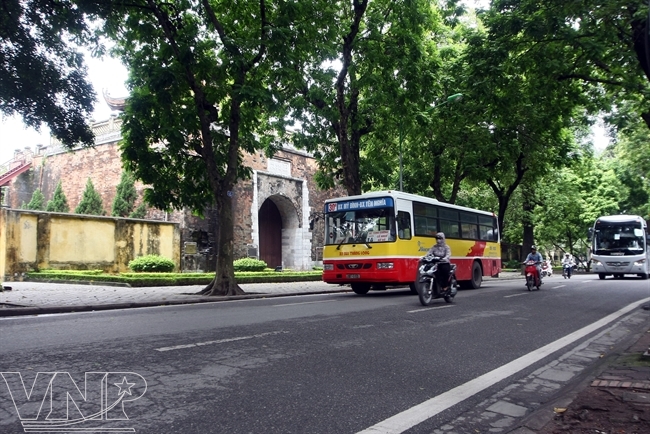
The image of Hanoi buses with the two colours of red and yellow has become familiar to both city residents and tourists.
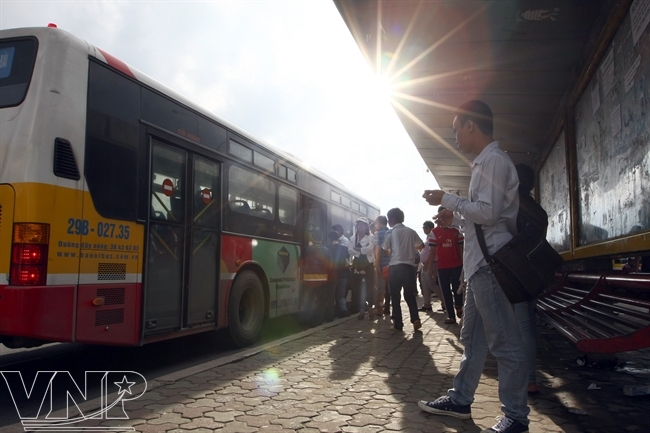
There are about 1,000 bus stops in inner and outskirt of Hanoi.
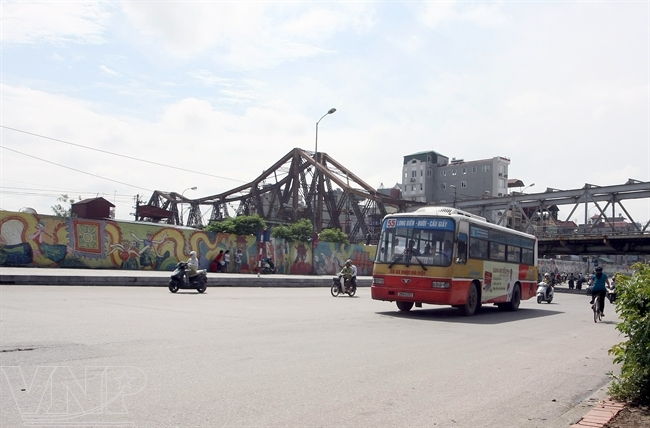
Each day, about 10,000 bus trips are ready to serve people in routes of the capital.
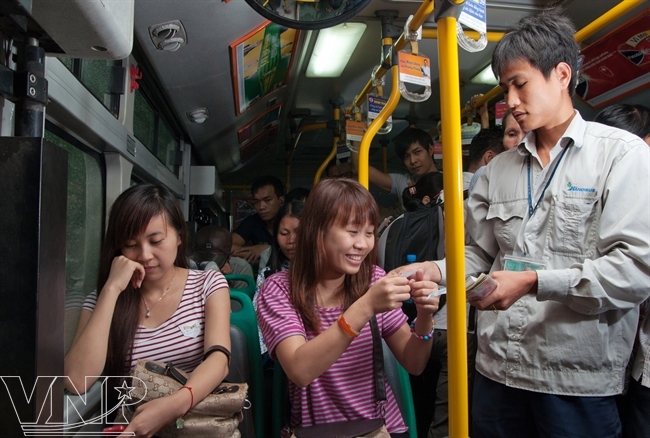
About one million people move by bus in Hanoi per day
which reduces over 700,000 motorbikes on roads and traffic jams in the inner city.
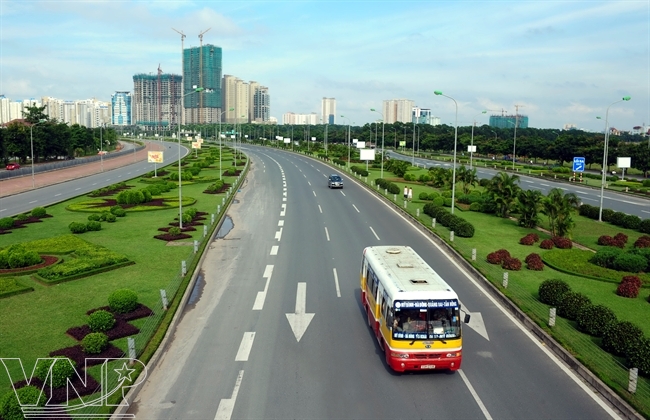
After expanding the administrative boundary, to meet the demand of transport of people in outskirt districts,
Transerco increases bus routes from 65 to 77, serving about 550 million passengers per year.
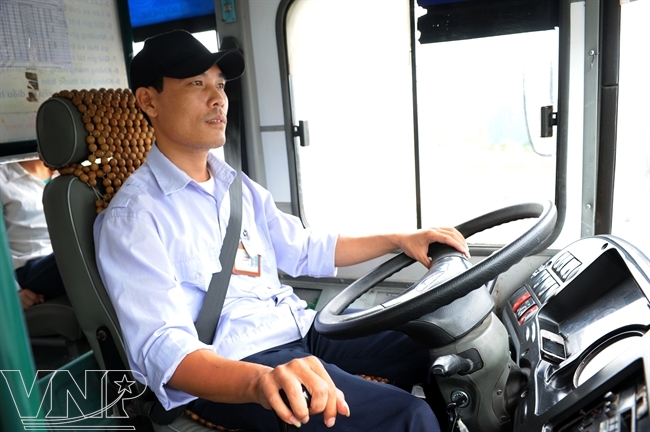
Driver Do Van Thuyet on the bus route No.35 (29T-5844) returned property to passenger leaving on the bus. .
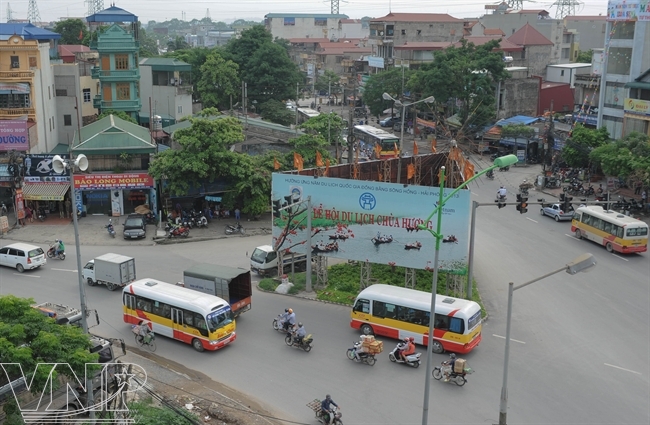
The bus routes from the inner city to Ba La, Ha Dong District (Ha Tay Province in the past) ...
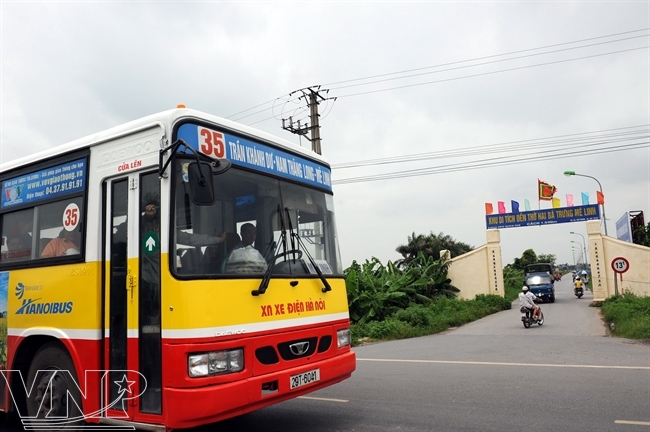
...And Me Linh District (Vinh Phuc Province in the past).
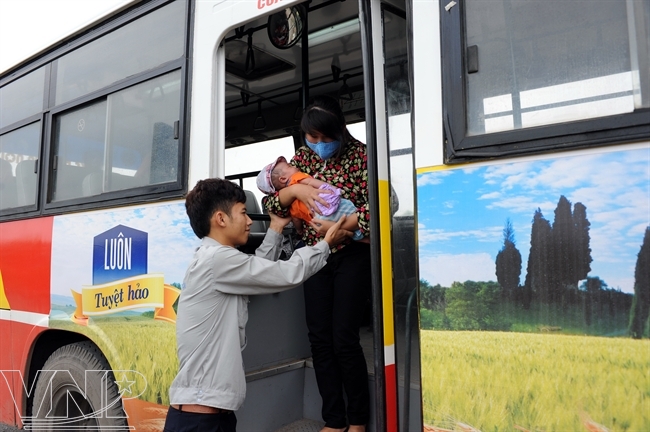
The quality of bus service has considerably improved over the years.
Transporting passengers by bus has so far been considered an effective solution to the public traffic issue in Hanoi. Over the past five years since Hanoi expanded the administrative boundary, the system of buses in Hanoi has been considerably improved and gradually gained the trust of the citizens. To meet the increasing demand, Hanoi Transport and Service Corporation (Transerco), the unit managing the most bus routes in Hanoi, built many other bus stations in Dong Anh District, Son Tay Town and Yen Nghia, increasing the total bus routes from 65 to 77 and serving about 550 million passengers/year. To improve the quality of service, Transerco put 35 new buses into operation and equipped 100% of buses with a system of sound to inform customers about stops on the route, organized training courses for 2,000 drivers and ticket sellers. It also regularly inspects and fines drivers’ traffic violations.
According to Transerco’s preliminary sum-up report in the first six months of 2013, the corporation’s bus system transported over 202.5 million passengers, accounting for 90% of the total number of passengers travelling by bus in the city. Its turnover reached over 2,042 billion dong, an increase of 10% over 2012.
According to Nguyen Viet Trieu, Deputy Director of Transerco, to solve the overloaded situation when the demand for travelling of the city residents increases, Transerco has invested in material facilities so its buses can access all administrative centres of districts and precincts, towns and crowded areas in the city. Up to 2015, Transerco will replace over 400 old buses.
At present, Hanoi’s Transport Department is submitting a plan on building an automatic ticket selling system, capitalized at 271 billion dong, to Hanoi City’s People Committee. This system will integrate into the management and observation of the bus routes. It is one of the measures to improve the quality of bus service.
According to Hanoi’s target, transporting passengers by bus will meet 50-55% of the citizens’ traffic demand by 2020. At present, the system of buses in Hanoi is run by 15 units under the common management of the Hanoi Public Transport Management and Operation Centre. Hanoi has now 1,000 bus stops with 10,000 turnarounds of buses/day that transport one million passengers, reducing over 700 motorbikes and traffic jams in Hanoi.
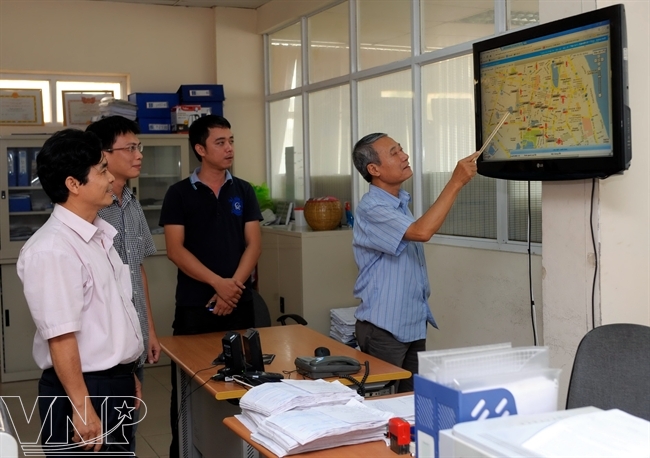
The management centre always supervises activities of the bus routes.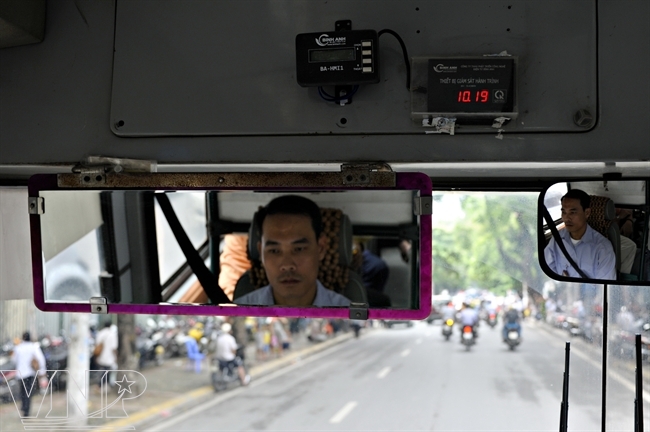
Black box installed on all busses to inspect speech and itinerary to ensure safety for passengers.
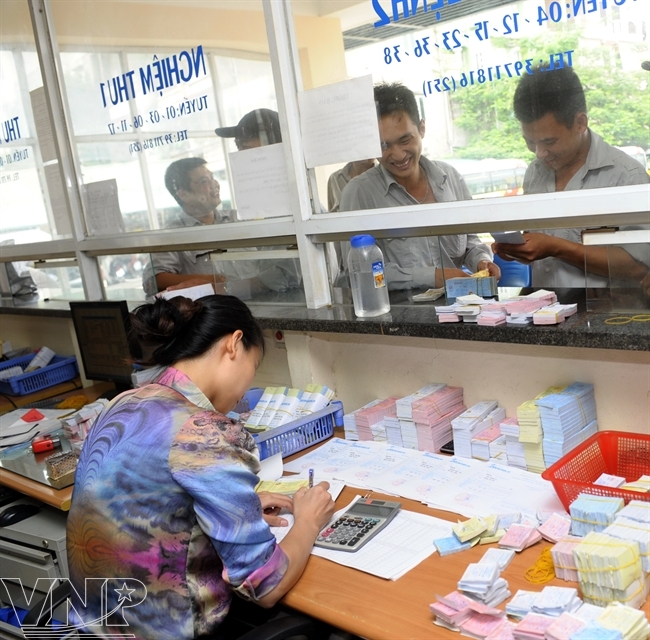
Staffs receive tickets before leaving station and return tickets after arriving.
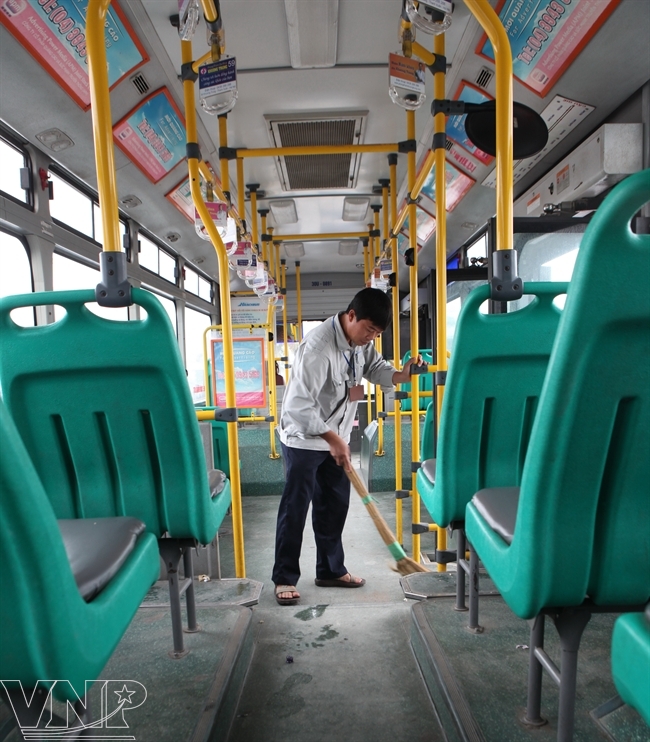
Cleaning bus’s floor.
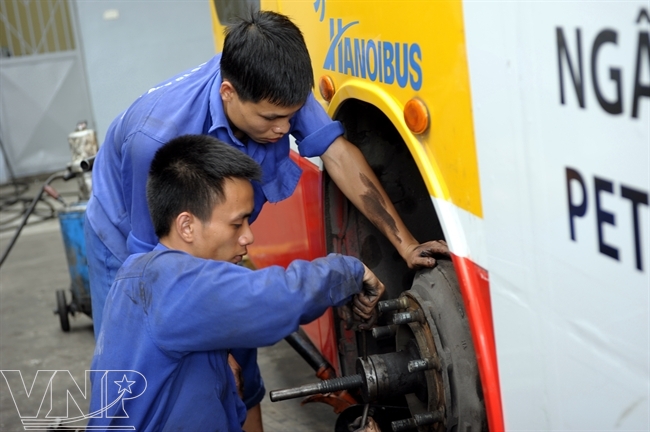
Maintaining bus every day to keep safety for passengers.
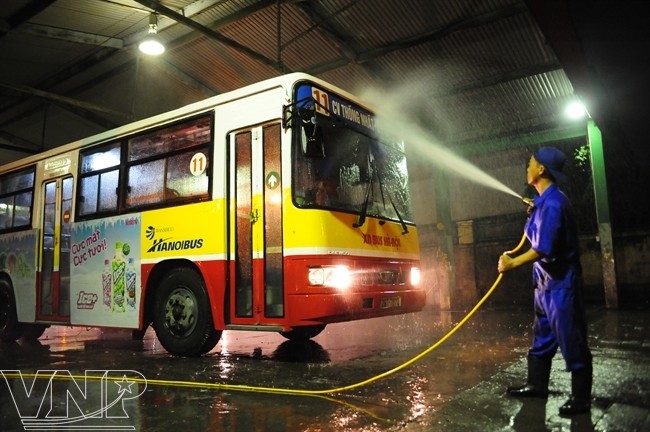
Cleaning bus after a working day.
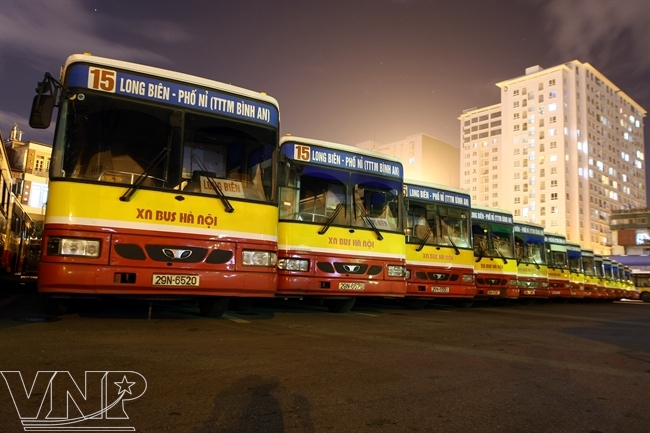
Busses are ready for a new day.
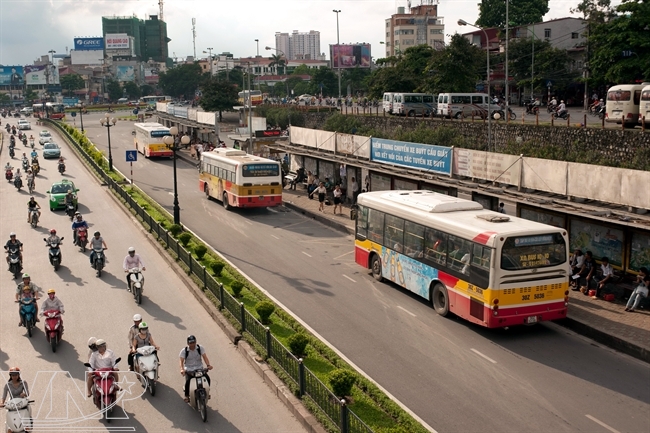
Hanoi buses with the two colours of red and yellow.
With many advantages, such as safe travelling and a cheap price, a bus is a favourite means of transport for city residents. To promote this public means of transport, many forums and information channels were established, such as “Bus Forum in Hanoi”, “Group of Bus Fans” and “Bus Hotline” that give useful and necessary information about using buses.
Over the years, the system of buses in Hanoi has considerably contributed to reducing traffic jams in the capital and facilitating the traffic of the locals. Travelling by bus has become a cultural habit of the metropolitans.
Story: Bich Van - Photos: Thong Hai, Thanh Trung